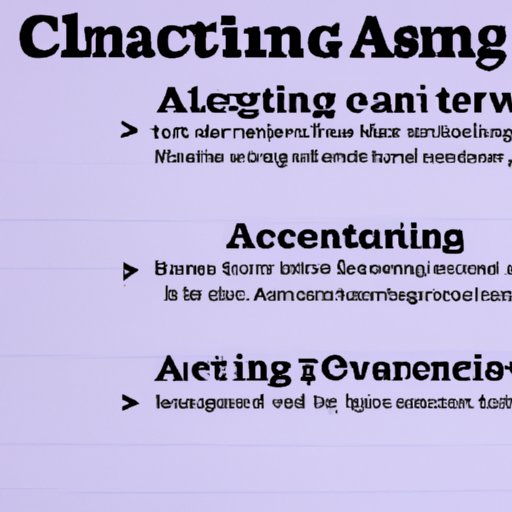Introduction
A call to action (CTA) is an essential tool used in argumentative writing. It serves as an invitation to readers to take action on the topic being discussed. A well-crafted CTA can be both persuasive and inspiring, motivating readers to engage with your content. In this article, we’ll explore what a call to action is, how to incorporate it into argumentative writing, and strategies for writing an engaging call to action.

Defining the Call to Action: What it is and How to Use it in Argumentative Writing
At its core, a call to action is a request for readers to do something. This could range from signing a petition or donating money to sharing content on social media or simply taking the time to consider the topic at hand. The goal of a CTA is to move readers to act in support of the position you are advocating.
When crafting a call to action, it is important to ensure that it is relevant and specific to the point you are trying to make. This will help to ensure that your message is clear and that readers understand the action you are asking them to take. Additionally, it is important to use language that encourages action and creates a sense of urgency. This will motivate readers to act quickly and decisively.
Crafting an Effective Call to Action for Your Argumentative Writing
The most effective calls to action are those that are specific and relevant to the point you are trying to make. Avoid making broad, generic statements such as “take action” or “do something”. Instead, focus on providing a specific action that readers can take. For example, if you are advocating for the protection of endangered species, your call to action might be to “sign the petition to protect endangered species in our state” or “donate to the organization working to save endangered species in our area”.
In addition to being specific, it is important to include a sense of urgency in your call to action. Using phrases such as “now” or “today” will help to motivate readers to act quickly and without hesitation. Additionally, using language that encourages action is key. Words such as “sign”, “join”, “support”, and “contribute” are all powerful words that inspire readers to take action.

The Power of a Persuasive Call to Action in Argumentative Writing
A well-crafted call to action has the power to transform readers from passive observers to active participants in your argument. An effective CTA demonstrates passion and conveys your conviction about the issue at hand. It also allows you to connect with readers on a personal level, showing them that you care about the issue and want them to join you in taking action.
Finally, a persuasive call to action can inspire readers to take action. By providing a clear and specific request for readers to take, it gives them the opportunity to become involved in the issue and feel like they are making a difference. This can be a powerful motivator for readers to take action.
Integrating Calls to Action into Argumentative Writing for Maximum Impact
In order to maximize the impact of your call to action, it is important to identify points in your argument where a CTA would be most effective. These points should be places where you have made your strongest arguments and argued most passionately for your position. Additionally, it is important to structure your argument in a way that supports your call to action. Make sure to provide readers with all of the information they need to take action and explain why it is important for them to do so.
Finally, utilizing visuals can be a great way to reinforce your call to action. Images, videos, infographics, and other visual elements can be used to draw attention to your CTA and make it stand out from the rest of your argument. This will help to ensure that readers take notice of your CTA and are motivated to take action.

Strategies for Writing an Engaging Call to Action in Argumentative Writing
When writing a call to action, it is important to keep the message simple. Avoid using overly complex language or jargon that may confuse readers. Additionally, it is important to avoid using overused cliches such as “the time is now” or “act now”. Finally, invite dialogue by encouraging readers to leave comments or questions about the issue at hand. This will help to create an ongoing conversation around your argument and further engage readers.
Conclusion
A call to action is an essential tool used in argumentative writing. It serves as an invitation to readers to take action on the topic being discussed. Crafting an effective CTA involves making it specific and relevant to your argument, including a sense of urgency, and using language that encourages action. When integrated into argumentative writing, a persuasive call to action can demonstrate passion, connect with readers, and inspire them to take action. Finally, when writing a call to action, it is important to keep the message simple, avoid cliches, and invite dialogue.
In conclusion, a well-crafted call to action can be a powerful tool in argumentative writing. By following the tips outlined in this article, you can create an effective CTA that will motivate readers to engage with your content and take action on the issue at hand.
(Note: Is this article not meeting your expectations? Do you have knowledge or insights to share? Unlock new opportunities and expand your reach by joining our authors team. Click Registration to join us and share your expertise with our readers.)
